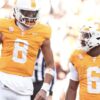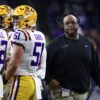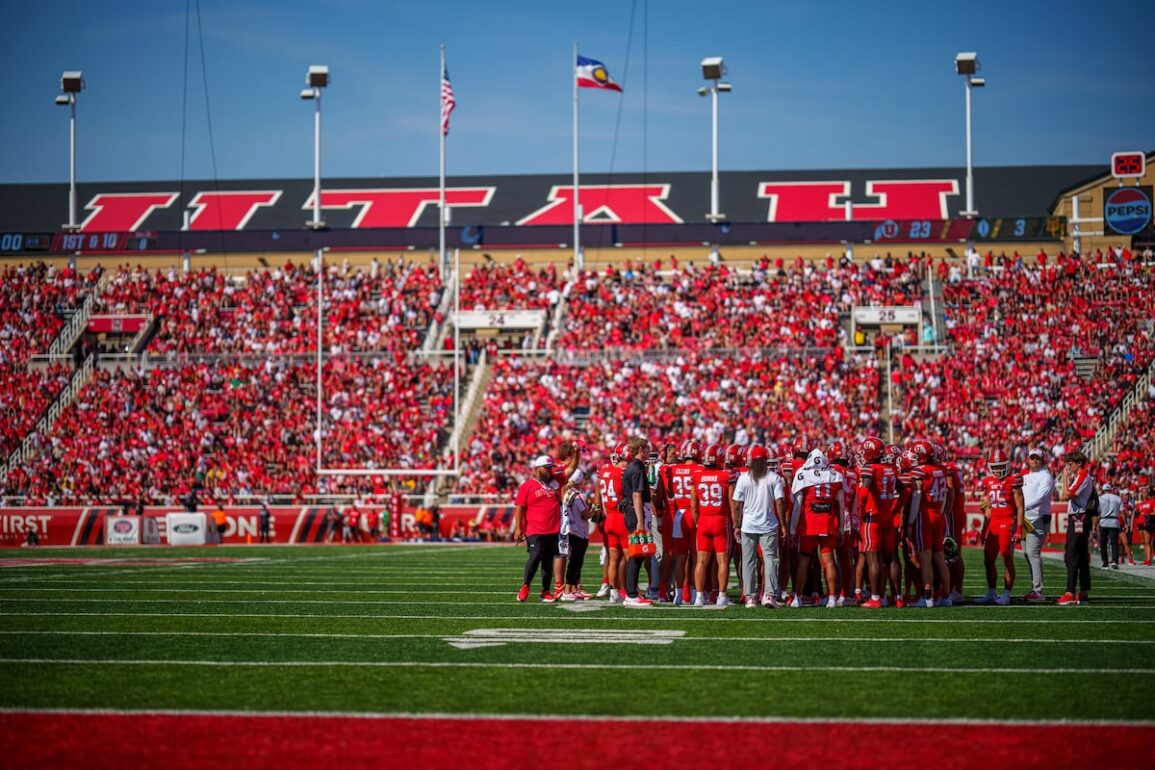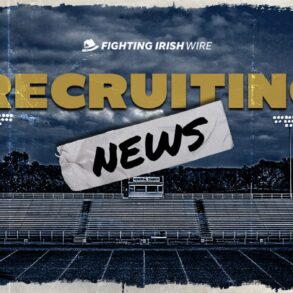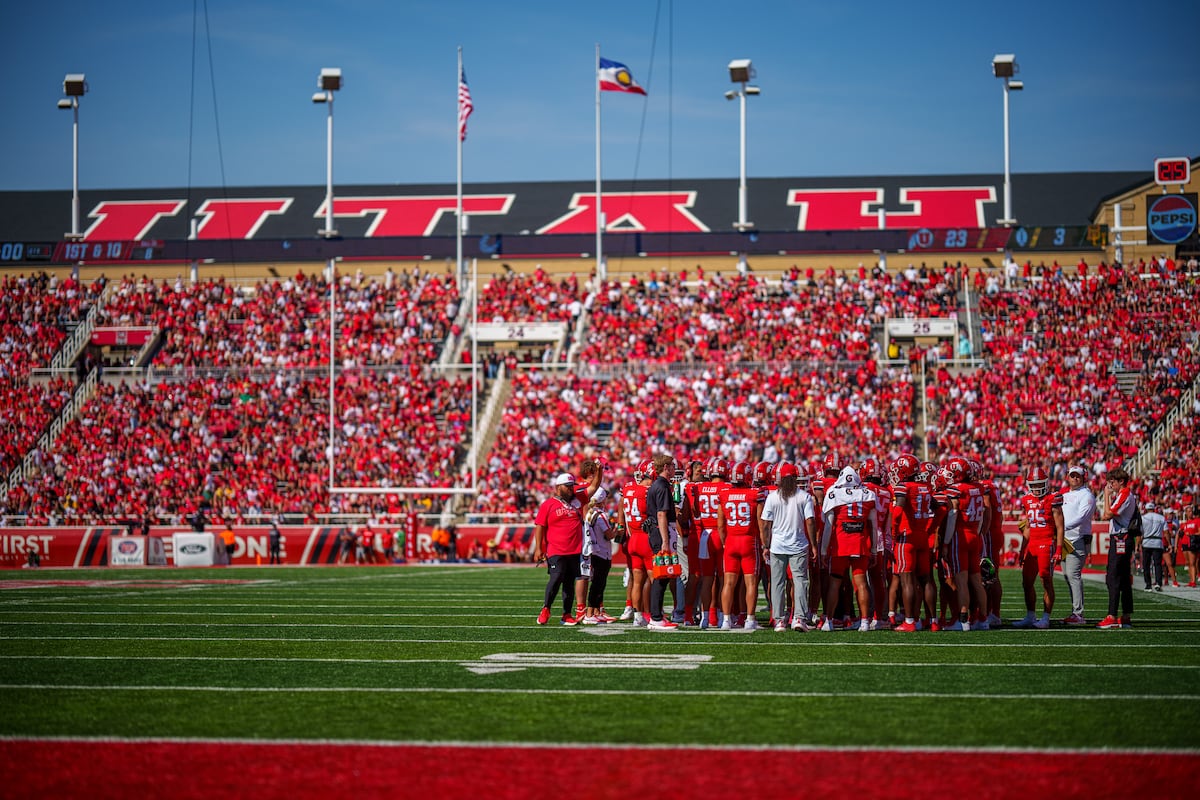
Keanu Tanuvasa’s phone seemed to ring nonstop after he entered the transfer portal last winter.
Some calls were from Utah football coaches, lobbying for him to stay in Salt Lake City. There was BYU with its own offer. Others were from SEC powerhouses Texas and Georgia, throwing their hat, and bags of money, into the ring for the star defensive tackle.
And there was a call from former Utah cornerback Cam Calhoun, who had entered the transfer portal earlier that offseason.
He was trying to bring Tanuvasa to Alabama.
“You can get anything you want, bro,” Calhoun said, according to Tanuvasa’s father, Shawn. “They’ll take care of you.”
The cornerback had initially accepted Utah’s name, image and likeness (NIL) offer in December, but other programs offered “nearly double,” according to a source close to the situation, causing Calhoun to jump into the portal.
In 2025, the world of college football has changed and NIL is the ultimate player in recruiting, particularly at the Power Four level.
That is true for Utah and head coach Kyle Whittingham, as he prepares for his 21st season as the Utes’ leader.
“You hear Oregon has around $30 million (in NIL), and they’re the top of the nation, as far as resources and Ohio State is right behind them in the high twenties,” Whittingham told The Salt Lake Tribune last fall.
“Those top figures are very important, but it’s more important where we are in the Big 12 in that regard.”
Utah football had a $6 million NIL budget in 2024, according to Whittingham, with its biggest check going to injury-riddled quarterback Cam Rising.
The team finished the year with a 5-7 record, its worst finish since 2013 when the program first entered the Pac-12.
But the Utes believe they will be better positioned than they were even a year ago, as the university prepares for a new era of revenue sharing and takes control of NIL fundraising from the Crimson Collective, the third-party, nonprofit that was essentially absorbed by the university earlier this year.
“Millions of dollars were raised and some truly innovative ideas were realized through the tremendous work of the Crimson Collective,” including the group’s work to provide the school’s football, basketball and gymnastics teams with automobile leases, the U.’s athletics department said in a statement.
But there were also problems with the setup, according to those who worked for the collective.
“It was not very successful as far as a separate entity,” said Erin Trenbeath-Murray, vice president of philanthropy for Ken Garff Enterprises and a former leader of the Crimson Collective.
The U. will now handle its own NIL matters while preparing for the pending House vs. NCAA settlement, a tentative $2.8 billion agreement that would resolve a federal antitrust lawsuit filed by college athletes against the NCAA and its major conferences, and allow university athletic departments to share up to $20.5 million in revenue with directly their student-athletes.
According to a university spokesperson, the Utes are still finalizing how that money would be distributed across the department’s programs. But the U. expects to hit the revenue-sharing cap.
“Utah Athletics will distribute the full allowable amount of $20.5 million to student-athletes in the first year of revenue sharing, pending the judge’s approval of the House vs. NCAA settlement later this spring,” the university told The Tribune.
July 1 is the current target date for the changes to go into effect.
“We’ve managed changes from the NCAA in this landscape, and we are confident that we will continue to do that,” an athletics department spokesperson said.
(Francisco Kjolseth | The Salt Lake Tribune) Utah athletic director Mark Harlan at the Huntsman Center in Salt Lake City, Tuesday, March 4, 2025.
‘It didn’t work well’
Last August, former Ute star Trevor Reilly strolled the sidelines of Utah’s practice field with U. Athletics Director Mark Harlan.
Reilly had just resigned as special teams coordinator at the University of Colorado after he had disagreements with the program’s plan to become a bigger player in the NIL space. Reilly wanted the program to think — and spend — bigger, going so far as to reach out to Saudi Arabia’s Public Investment Fund (PIF).
As he spoke with Harlan, Reilly said he began to feel like the Utes were still figuring out their NIL strategy, too.
“They [were] not organized as a school yet to provide [Whittingham] the NIL money that he needed to be Kyle Whittingham,” Reilly said.
The Crimson Collective was launched as a nonprofit in April of 2023 by Matt Garff, while Charlie Monfort, a Utah graduate and current owner of the Colorado Rockies, served as the collective board chair.
Garff declined to comment for this story.
For two years, the collective helped fund Utah football, men’s basketball and women’s basketball.
“We are appreciative of the work done by the Crimson Collective, and fully supported their ability to fundraise consistent with evolving NCAA rules regarding engagement between institutions and collectives,” the U. said in a statement.
But in its two-year existence, the collective and its staff of fundraisers struggled, former employees said.
“We didn’t already have this huge, cultivated donor base list,” Trenbeath-Murray said. “We were trying to start from the ground up. That was a big barrier for sure.”
The U. had an established group of boosters and season-ticket holders, the Crimson Club, which has long provided donations to fund scholarships and other Ute athletics efforts.
But Trenbeath-Murray said the U. couldn’t initially share email addresses with the third-party Crimson Collective.
According to a statement from the university, contact information for Crimson Club members wasn’t provided until later due to NCAA compliance rules.
“Lists were provided once it was confirmed that doing so was compliant within NCAA rules,” the university said in a statement.
A university spokesperson said there were regular “strategy meetings” between the athletic department and the collective.
“There were strategy meetings that included best-practice concepts to engage interested donors,” the university said in a statement. “The collaboration between the Crimson Collective and University staff, along with the passion of our donors, was a key reason for millions of dollars being raised to support student-athletes in the NIL era.”
Some U. supporters, however, noted some issues with the arrangement.
Matt Martinez, a former Utah football walk-on and now a strategic business consultant at the human resource company ADP, said he was contacted by the collective last year. Martinez said he tried helping an employee get in contact with more donors but was shown a list that surprised him.
“There were donors that were red-lined,” Martinez said of the list. “It said ‘can’t call, can’t talk to this person.’ It was a list of donors they didn’t want the collective having any conversations with.”
Another former collective employee confirmed there were weekly calls between Utah’s athletic administration and the collective to approve which donors the fundraisers could talk to.
“It was almost like we had a startup company, and … we weren’t allowed to talk to clients from the last company,” said the former employee, who spoke on condition of anonymity. “There were so many chefs in the kitchen trying to pull a dollar. It didn’t work well.
“They didn’t want us to come in and start calling and contacting all their people because they’ve worked with them for years. On their end, I don’t blame them, but it just kind of set us up for failure. We were so handcuffed that we had to just go find new money.”
According to the university, the newly hired associate athletics director and chief revenue officer, Patrick Nowlin, will lead ideas regarding revenue generation. Alongside him, associate ADs Jason Greco and John Jentz will lead the revenue-sharing and cap management strategies ahead of the pending approval of the House Settlement.
Former collective leaders said they believe the university taking control of fundraising will streamline the process and result in a bigger NIL pool.
“It was a natural transition as the U. started being more involved in the big gifts and the big asks,” Trenbeath-Murray said. “We were no longer running around asking for $5,000 gifts.
“That is not going to get you to $6 million, $8 million or even $9 million.”
(Rick Scuteri | AP) Utah head coach Kyle Whittingham watches the clock in the second half during an NCAA college football game against Arizona State, Friday, Oct. 11, 2024, in Tempe, Ariz. Arizona State won 27-19.
‘A record number of donors’
As Utah’s 2024 season came to a close and Whittingham surveyed his options in December, mulling a potential return or retirement, he phoned a former coaching colleague and close friend in Norm Chow.
“He told me the [2024] numbers, and it was way behind the other teams,” said Chow, Utah’s offensive coordinator in 2011. “I think the thing that bothered him a lot is the guys down the street, they’ve come up with a lot of dough.
“I think he ultimately felt comfortable returning because they were going to come up with a little bit more money to help with some of the guys.”
It appears that is the case.
“We achieved a record number of donors to the athletics department in 2024, and will continue to build on that momentum in 2025,” the university wrote in a statement.
“Fundraising will continue to be a significant focus for the entire department. … We will be rolling out in the near future our comprehensive approach for this new landscape that builds upon the foundation we established in 2021 with the introduction of our Elevate U program, and have evolved and expanded since that time.”
Utah could also look at private equity as an option.
“We will explore any opportunity that is strategic and beneficial for the future success of Utah Athletics and the University of Utah,” the U. said.
The Utes, who plan to disperse the full amount of revenue-sharing funds, could be ahead of some of their Big 12 rivals.
Kansas State athletic director Gene Taylor told The Tribune last month that the Wildcats had not yet raised the full $20.5 million allowed. The Wildcats expect to use 70% of their revenue-share allotment on football, Taylor said.
“We’ve just been handed a $20.5 million budget line item right now that we don’t have a way to pay for,” Taylor said. “We’re continuing to have those conversations and just coming up with everything. It’s just about how and where those buckets will be filled from.”
Oklahoma State is in a similar position, according to athletic director Chad Weiberg. If the Cowboys are able to meet the ceiling of the $20.5 million salary cap, OSU will give its football program between $14 million and $15 million of the funds.
“The first thing we all have to do is figure out how to get there,” Weiberg said in February. “I certainly think that we will. We haven’t finalized any of those numbers yet.”
This offseason, Utah was able to retain top players like cornerback Smith Snowden, left tackle Caleb Lomu and All-American right tackle Spencer Fano.
The Utes also added a bevy of talented portal players like New Mexico transfer quarterback Devon Dampier and Washington State transfer running back Wayshawn Parker, who was rated as the No. 7 running back in the portal.
More than ever, according to Utah tight ends coach Freddie Whittingham, money was the ultimate factor in recruiting after the 2024 season.
“The NIL package drove decisions even more so than they ever had before,” he said. “You look at Texas, A&M, Texas, Oregon and other teams like that. If you’re up against a team with those kinds of resources, and they can offer that kind of money, really, your only shot to be able to get the recruit is to look at it holistically.”
Things continue to evolve, however. The creation of an enforcement arm could be part of the House settlement.
Some, like Taylor, are hopeful that it could bring back some balance to college football.
“I mean, there’s still a lot of unknown there, but at least it’s a system in place that tries to level the playing field as much as it can,” Taylor said. “For a school to openly talk about a $20 million payroll for one sport is just stupid. We have to get that back in a box.”
Others are skeptical.
“It’s my personal belief that [programs will continue] to try and buy players,” Freddie Whittingham said. “I think that it’s a little bit naive to think that NIL is not going to continue to just add on top of the revenue sharing.”
But this is what does remain clear: funding will be important, whether it be through revenue-sharing or third-party NIL agreements. Those with the most funds will continue to have an elevated shot at the 12-team College Football Playoff.
Kyle Whittingham knows that.
And so do the Utes.
Note to readers • This story is available to Salt Lake Tribune subscribers only. Thank you for supporting local journalism.
This post was originally published on this site be sure to check out more of their content.



